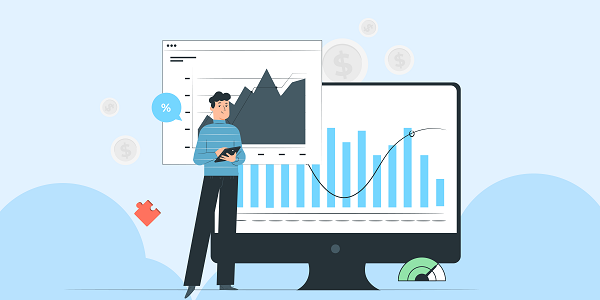Residential Proxies
Allowlisted 200M+ IPs from real ISP. Managed/obtained proxies via dashboard.

Proxies
Residential Proxies
Allowlisted 200M+ IPs from real ISP. Managed/obtained proxies via dashboard.
Residential (Socks5) Proxies
Over 200 million real IPs in 190+ locations,
Unlimited Residential Proxies
Use stable, fast, and furious 700K+ datacenter IPs worldwide.
Static Residential proxies
Long-lasting dedicated proxy, non-rotating residential proxy
Dedicated Datacenter Proxies
Use stable, fast, and furious 700K+ datacenter IPs worldwide.

Web Unblocker
View content as a real user with the help of ABC proxy's dynamic fingerprinting technology.
Proxies
API
Proxy list is generated through an API link and applied to compatible programs after whitelist IP authorization
User+Pass Auth
Create credential freely and use rotating proxies on any device or software without allowlisting IP
Proxy Manager
Manage all proxies using APM interface

Proxies
Residential Proxies
Allowlisted 200M+ IPs from real ISP. Managed/obtained proxies via dashboard.
Starts from
$0.77/ GB
Residential (Socks5) Proxies
Over 200 million real IPs in 190+ locations,
Starts from
$0.045/ IP
Unlimited Residential Proxies
Use stable, fast, and furious 700K+ datacenter IPs worldwide.
Starts from
$79/ Day
Rotating ISP Proxies
ABCProxy's Rotating ISP Proxies guarantee long session time.
Starts from
$0.77/ GB
Static Residential proxies
Long-lasting dedicated proxy, non-rotating residential proxy
Starts from
$5/MONTH
Dedicated Datacenter Proxies
Use stable, fast, and furious 700K+ datacenter IPs worldwide.
Starts from
$4.5/MONTH
Knowledge Base
English
繁體中文
Русский
Indonesia
Português
Español
بالعربية

Rotating or Sticky Proxies: How to Make the Right Choice
In the realm of online security and anonymity, proxies play a crucial role in safeguarding one's digital footprint. Among the various types of proxies available, rotating and sticky proxies stand out as popular choices. Each type offers unique features and functionalities that cater to different needs and requirements. In this blog post, we will delve into the differences between rotating and sticky proxies, helping you make an informed decision on which type to choose for your specific use case.
Rotating proxies, also known as backconnect proxies, are a type of proxy server that assigns a new IP address for each connection request made by the user. This constant rotation of IP addresses helps users maintain a high level of anonymity and bypass restrictions imposed by websites or online platforms. Rotating proxies are particularly advantageous for web scraping, data mining, and market research activities that require large amounts of data to be collected from diverse sources.
One of the key advantages of rotating proxies is their ability to distribute traffic across multiple IP addresses, thereby reducing the risk of IP blocking or blacklisting. By constantly changing IP addresses, rotating proxies enable users to access geo-restricted content, overcome rate limits, and avoid detection by anti-scraping mechanisms. Additionally, rotating proxies offer high levels of scalability and flexibility, making them ideal for dynamic web scraping projects that require frequent IP rotations.
On the other hand, sticky proxies, also known as static proxies, provide users with a fixed IP address that remains constant for a specified period of time. Unlike rotating proxies, sticky proxies offer consistent IP addresses that can be beneficial for tasks that require session persistence or authentication continuity. Sticky proxies are commonly used for social media management, online gaming, and e-commerce activities that demand stable connections and persistent identities.
When deciding between rotating and sticky proxies, it is essential to consider the specific requirements of your project or use case. Rotating proxies are well-suited for tasks that involve high-volume data extraction, frequent IP rotations, and evasion of anti-scraping measures. On the other hand, sticky proxies are more suitable for activities that require consistent IP addresses, long-term connections, and reliable performance.
To determine the appropriate type of proxy for your needs, assess the nature of your online activities, the volume of data you need to access, and the level of anonymity or stability required. If you are engaged in web scraping projects that involve scraping data from multiple sources or evading detection, rotating proxies may be the ideal choice. Conversely, if you require a fixed IP address for consistent online interactions or seamless browsing experiences, sticky proxies may be more suitable.
In conclusion, the choice between rotating and sticky proxies depends on the specific requirements of your online endeavors. Whether you opt for rotating proxies for dynamic data collection or sticky proxies for stable connections, understanding the differences between these two types of proxies is crucial in enhancing your online security and privacy. By weighing the benefits and limitations of rotating and sticky proxies, you can make an informed decision that aligns with your objectives and priorities in the digital realm.
Featured Posts
Popular Products
Residential Proxies
Allowlisted 200M+ IPs from real ISP. Managed/obtained proxies via dashboard.
Residential (Socks5) Proxies
Over 200 million real IPs in 190+ locations,
Unlimited Residential Proxies
Use stable, fast, and furious 700K+ datacenter IPs worldwide.
Rotating ISP Proxies
ABCProxy's Rotating ISP Proxies guarantee long session time.
Residential (Socks5) Proxies
Long-lasting dedicated proxy, non-rotating residential proxy
Dedicated Datacenter Proxies
Use stable, fast, and furious 700K+ datacenter IPs worldwide.
Web Unblocker
View content as a real user with the help of ABC proxy's dynamic fingerprinting technology.
Related articles

Why can't curl download the file
Discuss the common reasons why curl fails to download files, from network configuration to proxy settings, and analyze how to improve the success rate through optimization tools and proxy services. Learn how abcproxy helps efficient data transmission.

How to unblock YouTube? How to achieve YouTube Unblocked
Analyze the relationship between YouTube Unblocked's core technology and proxy IP, and explore how abcproxy can help users efficiently access restricted YouTube content through diversified proxy services.

Why do you need a dedicated proxy IP to buy shoes on SNKRS
This article analyzes the core role of dedicated proxy IP in SNKRS snap-ups, explores how to improve the success rate through proxy IP technology, and introduces how abcproxy provides professional solutions for sneaker enthusiasts.